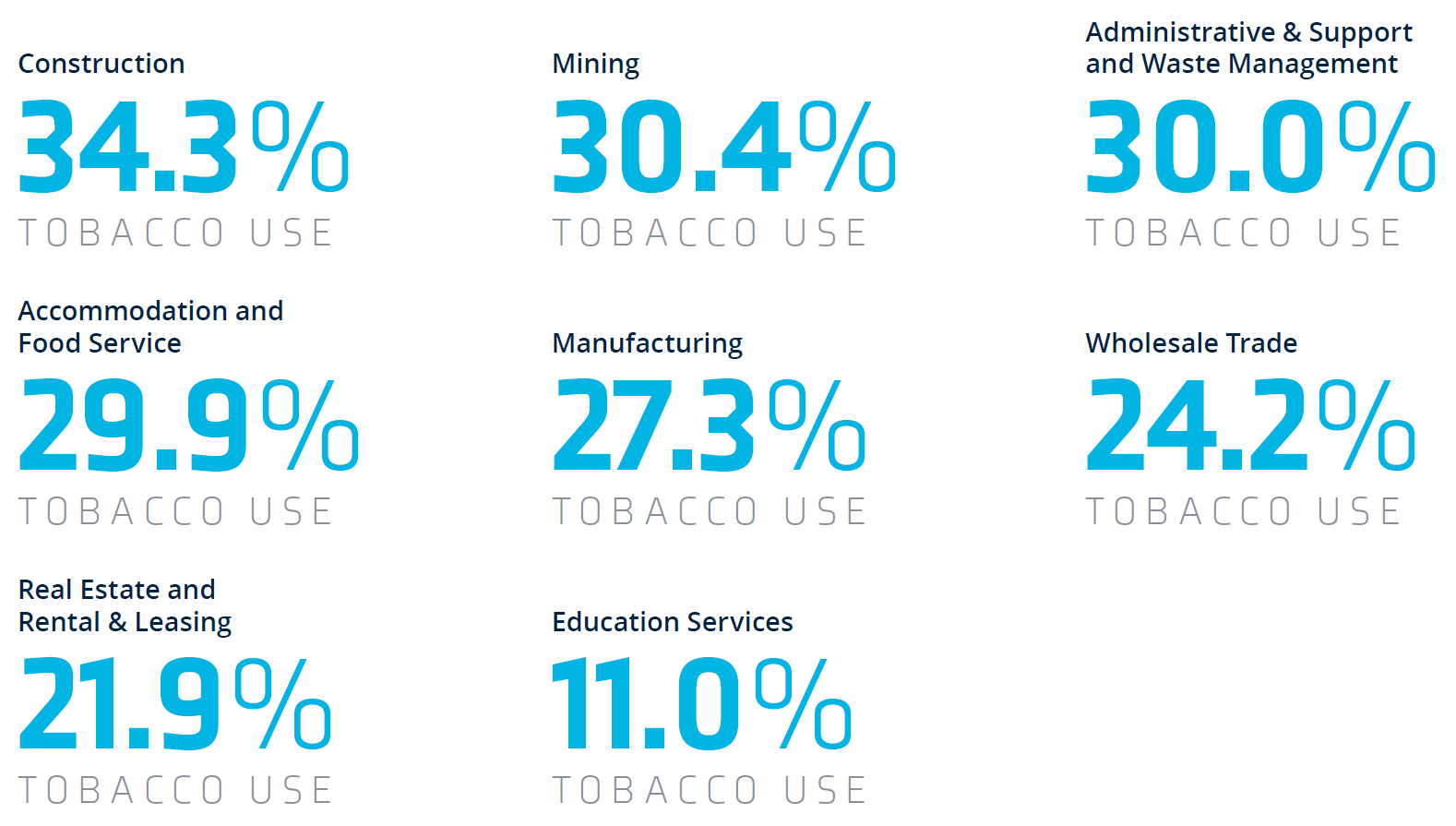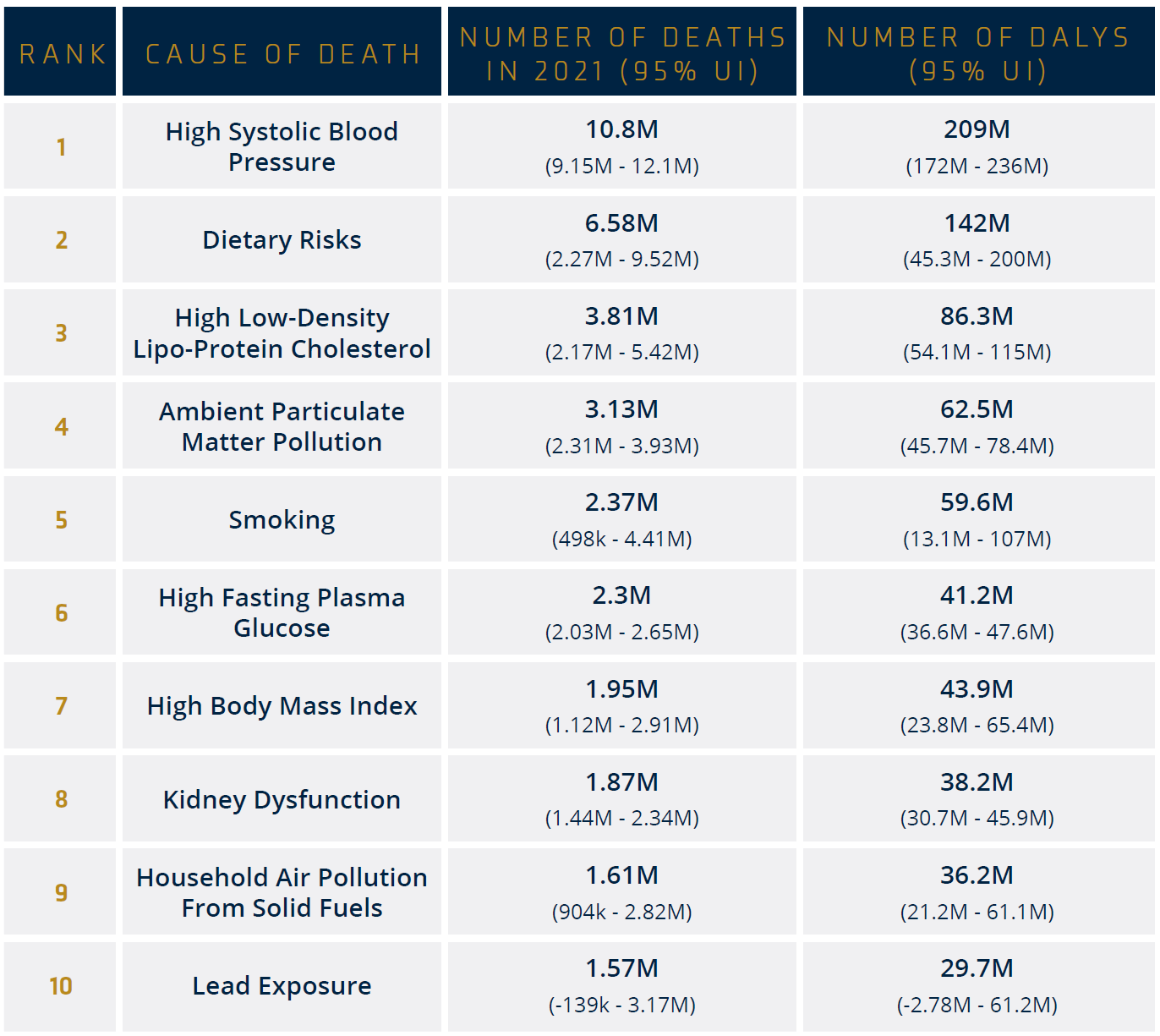Building a
Healthier Heart: Reducing Tobacco Use Among Construction Workers
Healthier Heart:
Q1 2025
For many construction workers, tobacco’s impact on heart health is a pressing issue that only worsens over time. Fortunately, this problem is preventable and employers now have a crucial opportunity to take action. By addressing tobacco use, companies can improve their workers’ health, reduce healthcare costs, and create a safer, more productive workplace.
Heart disease is a major drain on productivity, with U.S. employers losing a staggering $36.4 billion annually due to workplace absenteeism. A key factor here is tobacco use, which not only harms cardiovascular health but also impacts mental well-being. The construction industry, known for its physically demanding work, faces a particularly high prevalence of tobacco use — now the highest across all sectors.
This challenge has only intensified in the wake of the COVID-19 pandemic, when 22% of construction workers tried tobacco for the first time.1 But here’s the good news: employers have a unique opportunity to address these health concerns head-on, empowering their workforce and fostering a culture of wellness that boosts both health and productivity.
Tobacco use remains a major challenge in the construction industry, where about 34.3% of construction workers use tobacco products — the highest rate of any sector.2 This is particularly concerning given the already demanding nature of the job, with workers facing significant physical and safety risks.

Source: Tobacco Use Among Working Adults — United States, 2014–2016 | MMWR2
The health consequences of tobacco use are far-reaching, from increased heart disease and respiratory issues to mental health struggles. According to the American Heart Association, cardiovascular disease is the leading cause of death in the United States, with nearly 20% of those deaths attributed to smoking.3

Source: The Global Burden of Cardiovascular Diseases and Risk: A Compass for Future Health | Journal of the American College of Cardiology4
We understand that tackling tobacco use and heart health issues requires more than just offering generic advice—it demands actionable, employee-focused solutions. The CDC reports that 67.7% of tobacco smokers desire to quit.5 By promoting company resources that support cessation efforts, employers can help employees achieve their goals. This fosters a healthier workforce and improves overall well-being.
The success of tobacco cessation programs isn’t just measured by reduced absenteeism or lower healthcare costs—it’s about the transformative impact on employees’ lives. For example, companies implementing comprehensive wellness initiatives see higher employee engagement and satisfaction levels. When workers feel supported in their efforts to improve their health, they are more likely to be productive, loyal, and present.
In today’s competitive job market, the benefits you offer are more than just perks — they are essential tools for attracting, retaining, and engaging your workforce. By investing in comprehensive employee benefits that support both mental and physical health, companies position themselves as employers of choice, creating a more attractive environment for top talent.
As HR leaders, you have the power to unlock the potential of your workforce by addressing tobacco use and heart health head-on. With the right resources and support, you can create a healthier, more engaged workforce, reduce absenteeism, and lower healthcare costs.
Tobacco cessation programs, wellness initiatives, and heart health resources are all part of a broader strategy to engage and empower employees in their own well-being. When employees feel supported in improving their health, they are more likely to stay with their employer long-term, reducing turnover and increasing engagement.
We are committed to supporting you every step of the way, offering practical solutions and resources that help you invest in the well-being of your employees. We invite you to connect with us to explore our employee benefits packages and discuss how we can support your organization’s wellness goals. Together, we can create a healthier future for your workforce and your business.
Adam Moret
Whole Health Practice Lead
John Dodson
Marketing Strategist
Adam Storm
Copywriter